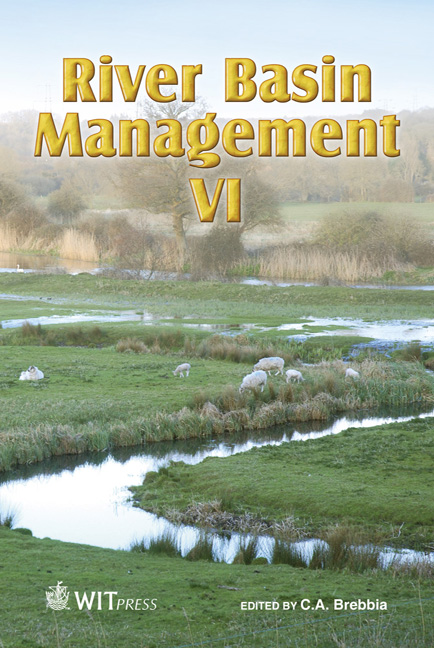Practical Methods For Water Discharge Measurements In Fluvial Sections
Price
Free (open access)
Transaction
Volume
146
Pages
13
Page Range
355 - 367
Published
2011
Size
1,315 kb
Paper DOI
10.2495/RM110301
Copyright
WIT Press
Author(s)
D. Mirauda, M. Greco & P. Moscarelli
Abstract
Recent aims and developments in water resource policies and management have been to achieve a high level of protection in both river systems as well as in the environment by natural hazard prevention and/or reduction. In river water management, the lack of direct field measures resulting from the necessity to dedicate long periods of time and effort represents a weakness in control and forecasting procedures. This paper is in reference to a detailed series of monitoring activities performed on Alzette river, in Grand-Duchy of Luxembourg and on Lucanian rivers in Southern Italy by applying the expeditive methodology for water discharge measurement and assessment, which allows maintaining high quality data and results. Keywords: river flow, velocity, measure, error, river monitoring. 1 Introduction The river flow forecasting represents a crucial point to employ for improving a management policy addressed to the right use of water resources as well as for conjugating prevention and defense actions against environmental degradation. Indeed, the European directive 2000/60/CEE [2] states the relevance of the monitoring and control activities as support to define the whole of protection measures to adopt for achieving the \“good state” of the water body. Thus, the quantitative monitoring of rivers is an essential step for environmental purposes both for addressing middle and long term surveillance and control activities, and for civil protection aims in terms of flood forecasting and risk mitigation. A correct quantitative knowledge of the fluvial flow cannot apart from experimental observations and measures. The development of numerical
Keywords
river flow, velocity, measure, error, river monitoring





